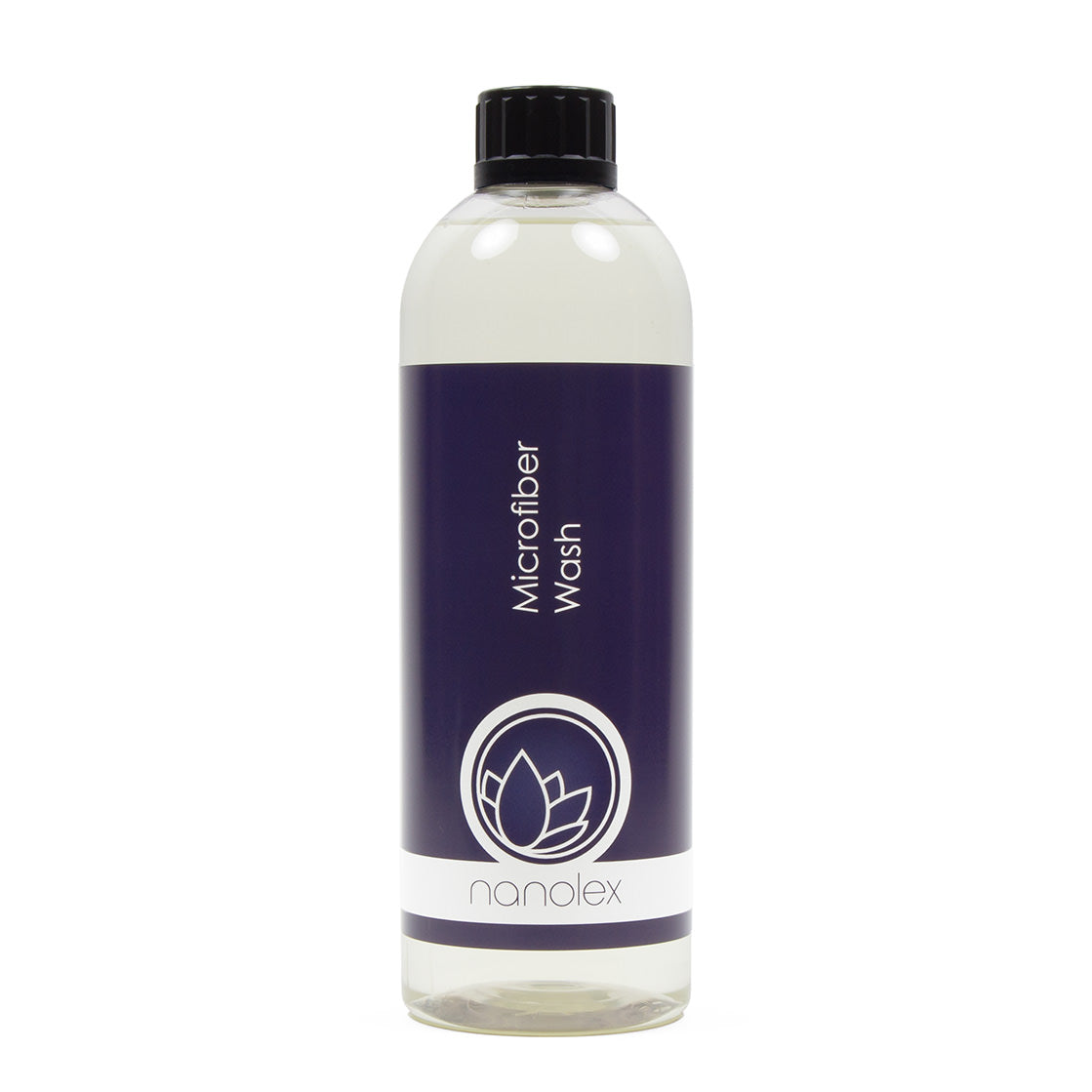

We Say
As a car care enthusiast, you can never have too many microfibre towels, as they play an important role in almost every detailing process. However, good quality microfibre towels are expensive, so unless you have more money than sense it pays to look after them properly. To do so, you should wash them after each use using Nanolex Microfiber Wash. Unlike domestic soap powders, Nanolex Microfiber Wash dissolves fully and will not leave hardened soap crystals lodged in your towels (such crystals can cause heavy marring). In addition, Nanolex Microfiber Wash contains no bleach or fabric softeners, both of which reduce the absorbency of microfibre towels over time.
Key Features
Cleaning Strength9/10(Compared To Others)
pH5(Acidic)
Recommended Dosage30 ml(Per Half Load)
Description
Nanolex Microfiber Wash is a liquid detergent formulated specifically for microfibre towels and other accessories. High quality microfibre products, including wash mitts, drying towels, polishing pads and applicators, must be washed properly to protect the structure of the microfibre and preserve its functionality. Nanolex Microfiber Wash, which is free from artificial fragrances and brighteners, ensures a mild yet rigorous wash in which polish, sealant and wax residues are fully removed in a safe way. This results in microfibre products lasting for longer and retaining their absorption and dirt removal abilities all the way through their working lives.
Specification
| Chemical Basis | Detergent-based |
|---|---|
| Cleaning Strength | |
| Recommended Dosage | 30 ml (for a half load in an 8 kg machine) |
| Size | 750 ml |
| pH | 5 (acidic) |
How To Use
In addition to microfibre products, Nanolex Microfiber Wash is also ideal for cleaning lambswool wash mitts and foam polishing pads. For half loads in front loading washing machines rated up to 8 kg, add 30 ml of product to the soap drawer and select a cycle with a maximum temperature of 40°C and a maximum spin speed of 1000 rpm (use 50 ml for full loads). After washing, hang your microfibre towels and pads to dry naturally on a line or tumble dry them on a cool heat setting (avoid placing them on or in front of radiators and other strong sources of heat, as this will shrink their polyamide content and thus reduce their softness and absorbency).

